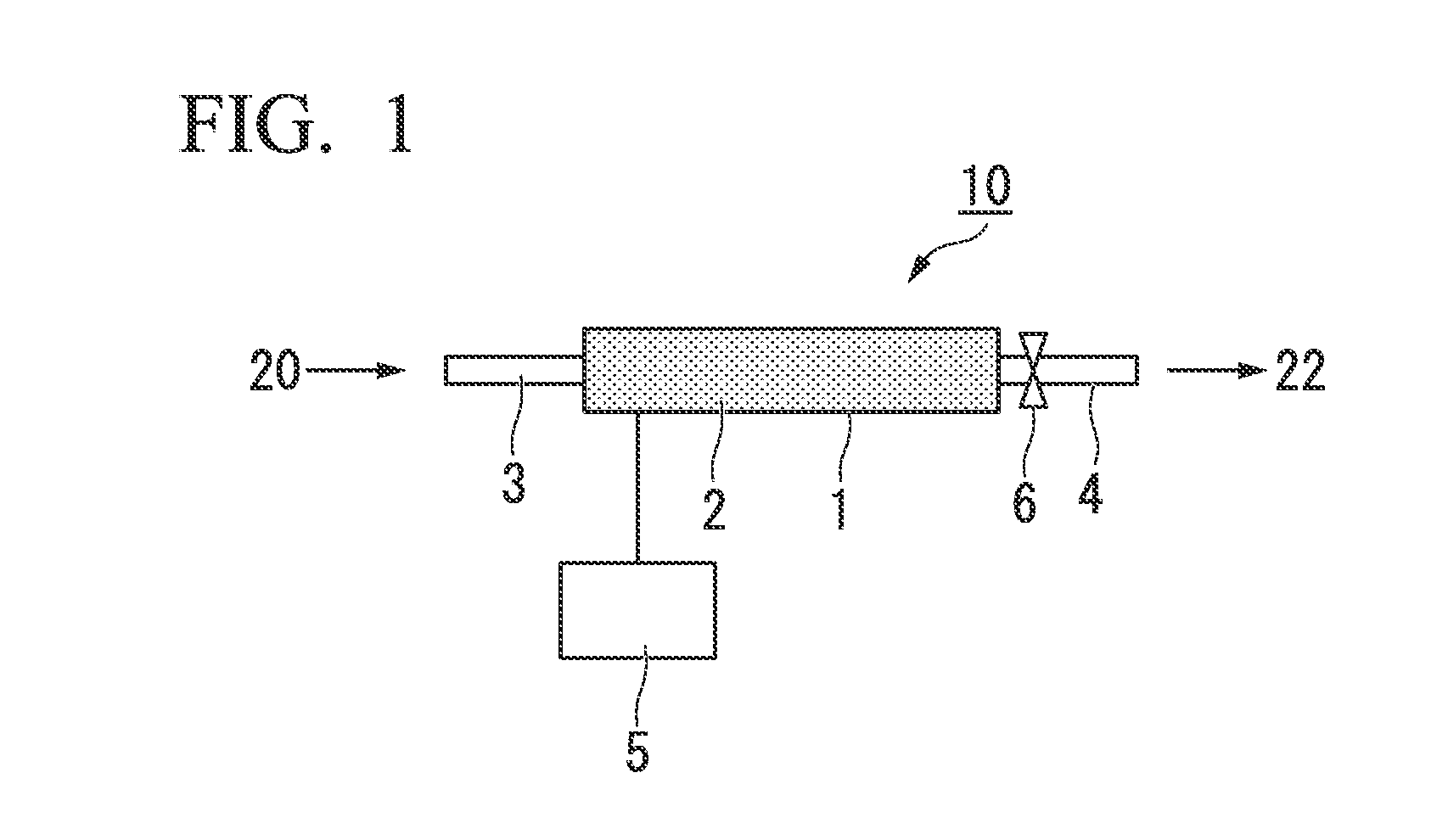Catalyst for alcohol synthesis, apparatus for producing alcohol and method for producing alcohol
- Summary
- Abstract
- Description
- Claims
- Application Information
AI Technical Summary
Benefits of technology
Problems solved by technology
Method used
Image
Examples
production example 1
Production of Catalyst Particles α
[0126]First, 0.61 mL of an aqueous solution containing 0.0123 g of an ammonium titanium lactate salt (Ti(OH)2[OCH(CH3)COO−]2(NH4+)2) was added dropwise to 1.0 g of a spherical silica gel (particle size: 1 to 2 mm, specific surface area: 430 m2 / g; average pore diameter: 5.7 nm, total pore volume: 0.61 mL / g) to impregnate the spherical silica gel. The resultant was dried at 110° C. for 3 hours, followed by calcination at 450° C. for 3 hours, thereby obtaining a primary supported body. Subsequently, 0.61 mL of an aqueous solution containing 0.0768 g of rhodium chloride trihydrate (RhCl3.3H2O), 0.048 g of lithium chloride monohydrate (LiCl·H2O), and 0.0433 g of manganese chloride tetrahydrate (MnCl2.4H2O) was added dropwise to the primary supported body to impregnate the primary supported body, and the resultant was dried at 110° C. for 3 hours and then baked at 400° C. for 3 hours to obtain catalyst particles α. With respect to the obtained catalyst pa...
production example 2
Production of Catalyst Particles β-1
[0127]First, 0.95 mL of an aqueous solution containing 0.344 g of copper nitrate trihydrate (Cu(NO3)2.3H2O) and 0.412 g of zinc nitrate hexahydrate (Zn(NO3)3.6H2O) was added dropwise to 1.0 g of a spherical silica gel (particle size: 1 to 2 mm, specific surface area: 315 m2 / g; average pore diameter: 10 nm, total pore volume: 0.95 mL / g) to impregnate the spherical silica gel. The resultant was dried at 110° C. for 3 hours, followed by calcination at 400° C. for 3 hours, thereby obtaining catalyst particles β-1 as the catalyst particles β. With respect to the obtained catalyst particles β-1, it was found that copper and zinc were contained as the catalyst metals β, and that the ratio of supported copper=9% by mass / SiO, and Cu:Zn=1.00:0.97 (molar ratio).
production example 3
Production of Catalyst Particles β-2
[0128]The same procedure as in Production Example 2 was repeated except that the amount of copper nitrate trihydrate (Cu(NO3)2.3H2O) was changed to 0.190 g and the amount of zinc nitrate hexahydrate (Zn(NO3)3.6H2O) was changed to 0.227 g, to thereby obtain catalyst particles β-2 as the catalyst particles β. With respect to the obtained catalyst particles β-2, it was found that copper and zinc were contained as the catalyst metals β, and that the ratio of supported copper=5% by mass / SiO, and Cu:Zn=1.00:0.97 (molar ratio).
PUM
| Property | Measurement | Unit |
|---|---|---|
| Volume ratio | aaaaa | aaaaa |
Abstract
Description
Claims
Application Information
 Login to View More
Login to View More - R&D
- Intellectual Property
- Life Sciences
- Materials
- Tech Scout
- Unparalleled Data Quality
- Higher Quality Content
- 60% Fewer Hallucinations
Browse by: Latest US Patents, China's latest patents, Technical Efficacy Thesaurus, Application Domain, Technology Topic, Popular Technical Reports.
© 2025 PatSnap. All rights reserved.Legal|Privacy policy|Modern Slavery Act Transparency Statement|Sitemap|About US| Contact US: help@patsnap.com

